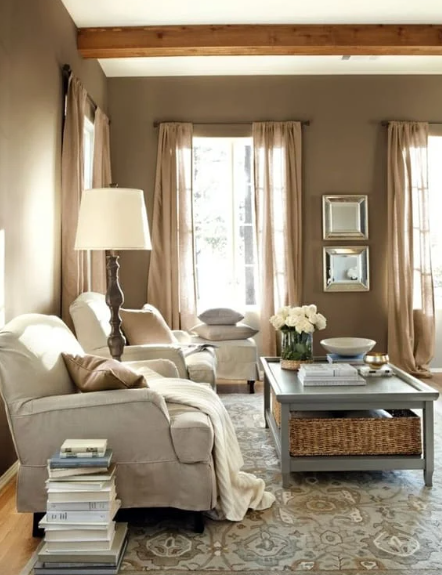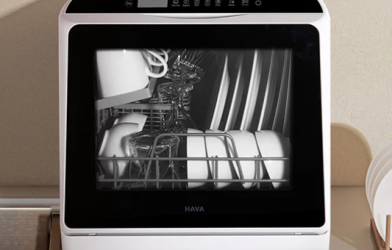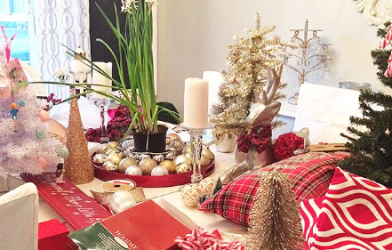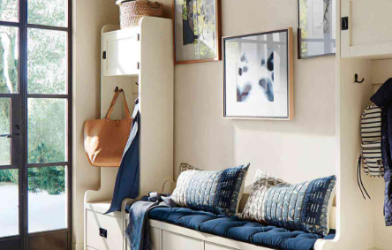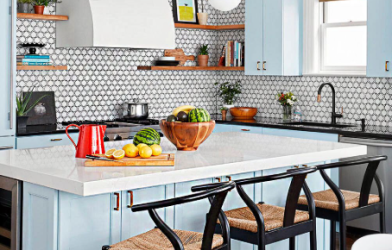Subtotal $0.00
The term “warm colors” is frequently thrown around in design discussions, but for those unfamiliar with color theory, it might not be immediately clear what exactly this means. So, what are warm colors, and why should you care about them when decorating your home? This article will explore the magic of warm colors, how they can transform a space, and why they remain such a beloved choice for home décor.
What Are Warm Colors?
In simple terms, warm colors include shades like red, orange, yellow, and brown. These colors are typically associated with warmth, fire, and sunlight, which is why they are so inviting. Warm colors sit opposite cool tones like blues and greens on the color wheel. While cool colors evoke a sense of calm and tranquility, warm colors bring energy and warmth, making them ideal for creating a cozy environment.
When to Use Warm Colors in Your Home
The right time and place for warm colors depends on the function of the room and the ambiance you’re hoping to achieve. Here are a few suggestions for incorporating these vibrant shades into your living space:
Large, Open Spaces
Big rooms, like living rooms or family areas, can often feel vast and impersonal. Adding warm colors can help make these spaces feel more intimate and inviting. Opt for soft, neutral tones such as buttery yellows, earthy browns, or even rich terracotta. These shades add warmth and personality without overwhelming the room. They can transform a cold, unwelcoming space into one that feels relaxed and homey.
Rooms Where Color Dominates
Some rooms, such as dining areas, have limited opportunities to add color through furniture or décor. In these cases, wall color takes center stage. Bold warm tones can add life to the room and give it a welcoming atmosphere. Since the walls are the first thing you notice when entering, choosing a warm hue will create a lasting impression.
The Power of Warm Colors
One of the most striking effects of warm colors is their ability to make a room feel cozier. The warm tones seem to draw in towards you, creating the illusion of a smaller, more intimate space. This is why warm colors are often favored in areas where comfort and a personal touch are key. The emotional response they evoke makes rooms feel more inviting and connected, which is exactly why they’re such a popular choice in homes.
On the flip side, cool colors tend to make spaces feel larger and airier, as they push away from the viewer. Both warm and cool tones have their place, but when it comes to creating that homey, cozy feel, warm colors are the go-to option.
Where to Add Warmth in Your Home
Certain spaces naturally lend themselves to warm tones. If your home has features like fireplaces, wood accents, or built-in bookcases, warm colors are the perfect complement. These areas already exude a sense of comfort and coziness, so adding warm hues can enhance the atmosphere and make the room feel even more inviting.
In fact, there’s a Danish concept known as “hygge,” which refers to a quality of coziness that creates a feeling of well-being. By embracing warm colors, you can enhance this hygge-inspired vibe in your home, making it feel like a haven of warmth and contentment.
Warm Colors: Light or Dark?
Warm colors can range from soft, subtle tones to deep, rich hues. While we often associate warm colors with bold, saturated shades like deep oranges and reds, they can also include more delicate colors like cream, beige, and soft yellows. Whether you choose lighter, airy hues or deep, earthy tones, warm colors offer flexibility that allows them to work in any room of the house.
For spaces with exposed wood or brick, it’s best to stick with warm neutrals that complement the natural elements. This will further enhance the cozy, welcoming atmosphere you’re trying to create.
Lighting Matters Too
Lighting plays a big role in how warm colors are perceived. The type of lighting you use can influence the mood of a room. Edison bulbs, which emit a warm, yellow-toned glow, are perfect for enhancing a cozy, inviting atmosphere. They’re often used in farmhouse-style homes or trendy gastropubs for their nostalgic, comforting feel.
If you prefer a more versatile approach, smart lighting systems like Philips Hue allow you to adjust the color temperature of your lights. This gives you the ability to shift from warm to cool lighting, depending on the mood you want to set in the room.
Conclusion
Warm colors have a unique ability to transform a space into a comfortable, cozy haven. Whether you’re designing a large living room, a dining area, or even a small nook, these colors can add personality and warmth to any room. The key is using them thoughtfully, ensuring that they complement the natural elements of your home and create a harmonious atmosphere. By embracing warm colors and paying attention to lighting, you can craft a space that feels inviting all year round.




